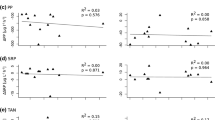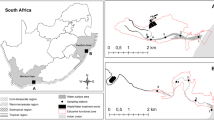Abstract
Since the mud snail Bullacta exarata was introduced for economic aquaculture in the Huanghe River (Yellow River) Delta in 2001, its quick population growth and expanded distribution make it a key-species in the intertidal zone of this area. This significantly contributed to the economic income of the local people, but its potential ecological impact on the benthic ecosystem remains unknown. A mesocosm study was conducted to test whether its bioturbation activities affect the microphytobenthos (MPBs; i.e., sedimentary microbes and unicellular algae) productivity and the nutrient exchange between the sediment-water interface. Our results show that the mud snail significantly impacted the dissolved oxygen (DO) flux across the sediment-water interface on the condition of normal sediment and light treatment, and significantly increased the ammonium efflux during recovery period in the defaunated sediment and dark treatment. The presence of micro- and meiofauna significantly increased the NH4-N flux in dark treatment. Whereas, in light treatment, these small animals had less effects on the DO and NH4-N flux between sediment-water interface. Our results provide better insight into the effect of the mud snail B. exarata on the ecosystem functioning via benthic fluxes.
Similar content being viewed by others
References
Aller R C, Yingst J Y. 1985. Effects of the marine deposit-feeders Heteromastus filiformis (Polychaeta), Macoma balthica (Bivalvia), and Tellina texana (Bivalvia) on averaged sedimentary solute transport, reaction rates, and microbial distributions. Journal of Marine Research, 43(3): 615–645, doi: 10.1357/002224085788440349
An S, Joye S B. 2001. Enhancement of coupled nitrification-denitrification by benthic photosynthesis in shallow estuarine sediments. Limnology and Oceanography, 46(1): 62–74, doi: 10.4319/lo.2001.46.1.0062
Bao Jianmin, Wang Zhizheng, Chen Qiheng, et al. 2007. Acute toxic effects of four heavy metals on Bullacta exarata. Journal of Zhejiang Ocean University (Natural Science) (in Chinese), 26(3): 252–256
Bartoli M, Nizzoli D, Viaroli P. 2003. Microphytobenthos activity and fluxes at the sediment-water interface: interactions and spatial variability. Aquatic Ecology, 37(4): 341–349, doi: 10.1023/B:AECO.0000007040.43077.5f
Callender E, Hammond D E. 1982. Nutrient exchange across the sediment-water interface in the Potomac River Estuary. Estuarine, Coastal and Shelf Science, 15(4): 395–413, doi: 10.1016/0272-7714(82)90050-6
Davey J T. 1993. Macrofaunal community bioturbation along an estuarine gradient. Netherland Journal of Aquatic Ecology, 27(2–4): 147–153, doi: 10.1007/BF02334777
Eleftheriou A. 2013. Methods for the Study of Marine Benthos. 4th ed. Chichester: Wiley
Flindt M R, Nielsen J B. 1992. Heterotrophic bacterial activity in Roskilde Fjord sediment during an autumn sedimentation peak. Hydrobiologia, 235–236(1): 283–293, doi: 10.1007/BF00026220
Freitag T E, Klenke T, Krumbein W E, et al. 2003. Effect of anoxia and high sulphide concentrations on heterotrophic microbial communities in reduced surface sediments (Black Spots) in sandy intertidal flats of the German Wadden Sea. FEMS Microbiology Ecology, 44(3): 291–301, doi: 10.1016/S0168-6496(03)00076-X
Gerino M. 1990. The effects of bioturbation on particle redistribution in mediterranean coastal sediment. Preliminary results. Hydrobiologia, 207(1): 251–258, doi: 10.1007/BF00041463
Gordon L I, Jennings Jr J C, Ross A A, et al. 1993. A suggested protocol for continuous flow automated analysis of seawater nutrients (Phosphate, Nitrate, Nitrite and Silicic Acid) in the WOCE Hydrographic Program and the Joint Global Ocean Fluxes Study, WOCE Operations Manual, vol. 3: The Observational Programme, Section 3.2: WOCE Hydrographic Programme, Part 3.1.3: WHP Operations and Methods. WHP Office Report WHPO 91-1; WOCE Report No./91. November, 1994, Revision 1, Woods Hole, Mass, USA, 52 Loose-leaf
Graf G, Rosenberg R. 1997. Bioresuspension and biodeposition: a review. Journal of Marine Systems, 11%(3–4): 269–278, doi: 10.1016/S0924-7963(96)00126-1
Li Baoquan, Keesing J K, Lourey M, et al. 2013. Feeding and bioturbation effects of the sand dollar Peronella lesueuri (L. Agassiz, 1841) (Echinodermata) on microphytobenthos and sediment fluxes. Marine and Freshwater Behaviour and Physiology, 46(6): 431–446, doi: 10.1080/10236244.2013.850834
Lohrer A M, Thrush S F, Gibbs M M. 2004. Bioturbators enhance ecosystem function through complex biogeochemical interactions. Nature, 431(7012): 1092–1095, doi: 10.1038/nature03042
Mermillod-Blondin F. 2011. The functional significance of bioturbation and biodeposition on biogeochemical processes at the water-sediment interface in freshwater and marine ecosystems. Freshwater Science, 30(3): 770–778
Mermillod-Blondin F, Rosenberg R. 2006. Ecosystem engineering: the impact of bioturbation on biogeochemical processes in marine and freshwater benthic habitats. Aquatic Sciences, 68(4): 434–442, doi: 10.1007/s00027-006-0858-x
Michaud E, Desrosiers G, Mermillod-Blondin F, et al. 2005. The functional group approach to bioturbation: the effects of biodiffusers and gallery-diffusers of the Macoma balthica community on sediment oxygen uptake. Journal of Experimental Marine Biology and Ecology, 326(1): 77–88, doi: 10.1016/j.jembe.2005.05.016
Michaud E, Desrosiers G, Mermillod-Blondin F, et al. 2006. The functional group approach to bioturbation: II. The effects of the Macoma balthica community on fluxes of nutrients and dissolved organic carbon across the sediment-water interface. Journal of Experimental Marine Biology and Ecology, 337(2): 178–189
Montserrat F, van Colen C, Provoost P, et al. 2009. Sediment segregation by biodiffusing bivalves. Estuarine, Coastal and Shelf Science, 83(4): 379–391, doi: 10.1016/j.ecss.2009.04.010
Nils R P. 2003. Coupled nitrification-denitrification in autotrophic and heterotrophic estuarine sediments: on the influence of benthic microalgae. Limnology and Oceanography, 48(1): 93–105, doi: 10.4319/lo.2003.48.1.0093
Nizzoli D, Bartoli M, Cooper M, et al. 2007. Implications for oxygen, nutrient fluxes and denitrification rates during the early stage of sediment colonisation by the polychaete Nereis spp. in four estuaries. Estuarine, Coastal and Shelf Science, 75(1-2): 125–134, doi: 10.1016/j.ecss.2007.03.035
Revsbech N P, Jørgensen B B, Brix O. 1981. Primary production of mi-croalgae in sediments measured by oxygen microprofile, H14CO3-fixation, and oxygen exchange methods. Limnology and Oceanography, 26(4): 717–730, doi: 10.4319/lo.1981.26.4.0717
Røy H, Hüttel M, Jørgensen B B. 2002. The role of small-scale sediment topography for oxygen flux across the diffusive boundary layer. Limnology and Oceanography, 47(3): 837–847, doi: 10.4319/lo.2002.47.3.0837
Rysgaard S, Christensen P B, Sørensen M V, et al. 2000. Marine meiofauna, carbon and nitrogen mineralization in sandy and soft sediments of Disko Bay, West Greenland. Aquatic Microbial Ecology, 21(1): 59–71
Siebert T, Branch G M. 2006. Ecosystem engineers: Interactions between eelgrass Zostera capensis and the sandprawn Callianassa kraussi and their indirect effects on the mudprawn Upogebia Africana. Journal of Experimental Marine Biology and Ecology, 338(2): 253–270, doi: 10.1016/j.jembe.2006.06.024
Smith D J, Underwood G J C. 2000. The production of extracellular carbohydrates by estuarine benthic diatoms: the effects of growth phase and light and dark treatment. Journal of Phycology, 36: 321–333
Sundbäck K, McGlathery K. 2005. Interactions between benthic macroalgal and microalgal mats. In: Kristensen E, Haese R R, Kostka J E, eds. Interactions Between Macro- and Microorganisms in Marine Sediments, Volume 60. Washington: American Geophysical Union, 7–29
Tang Min, Kristensen E. 2007. Impact of microphytobenthos and macroinfauna on temporal variation of benthic metabolism in shallow coastal sediments. Journal of Experimental Marine Biology and Ecology, 349(1): 99–112, doi: 10.1016/j.jembe.2007.05.011
Tita G, Desrosiers G, Vincx M, et al. 2002. Intertidal meiofauna of the St Lawrence estuary (Quebec, Canada): diversity, biomass and feeding structure of nematode assemblages. Journal of the Marine Biological Association of the United Kingdom, 82(5): 779–791, doi: 10.1017/S0025315402006148
Widdicombe S, Austen M C. 1998. Experimental evidence for the role of Brissopsis lyrifera (Forbes, 1841) as a critical species in the maintenance of benthic diversity and the modification of sediment chemistry. Journal of Experimental Marine Biology and Ecology, 228(2): 241–255, doi: 10.1016/S0022-0981(98)00032-X
Ye Shufeng, Lu Jianjian. 2001a. Analysis on the spatial distribution of Bullacta exarata (Mollusca: Gastropoda: Atyidae) population in Yangtze River Estuary, China. Zoological Research (in Chinese), 22(2): 131–136
Ye Shufeng, Lu Jianjian. 2001b. Characteristics and ecological significance of the developing population of Bullacta exarata (Philippi, 1848) (Mullusca: Gastropoda, Atyidae) in the Yangtze Estuary, China. Resources and Environment in the Yangtze Basin (in Chinese), 10(3): 216–222
You Zhongjie, Wang Yinong, Ding Wei, et al. 1994. Some environmental factors on the different development stages of the mud snail Bullacta exarata. Journal of Zhejiang College of Fisheries (in Chinese), 13(2): 79–85
Yu Hong, Wang Yinong, Shao Jianzhong. 2003. Biological characteristics, artificial breeding and culture techniques of mud snails. Marine Fisheries (in Chinese), 4: 198–199
Yuan Chunting, Liu Jinming, Bo Xuefeng, et al. 2006. Report on the culture of mud snail Bullacta exarata in intertidal zone of Dongying. Shandong Fisheries (in Chinese), 23(3): 25–26
Zheng Huaiping. 2003. Preliminary study on characteristics of behavior and reproductive biology for Bullacta exarata (Philippi). Marine Sciences (in Chinese), 27(1): 69–71
Zilius M, Daunys D, Petkuviene J, et al. 2012. Sediment-water oxygen, ammonium and soluble reactive phosphorus fluxes in a turbid freshwater estuary (Curonian lagoon, Lithuania): evidences of benthic microalgal activity. Journal of Limnology, 71(2): 309–319
Acknowledgements
We thank the managers of Long-term Experimental Stations in the Huanghe River Delta of Yantai Institute of Coastal Zone Research, Chinese Academy of Sciences (YIC-CAS) for assistance with this experiment and Charlie Qu for his help in the respiration measurements as well as the students from the YIC-CAS for their helps during field experiments.
Author information
Authors and Affiliations
Corresponding author
Additional information
Foundation item: The Strategic Priority Research Program of the Chinese Academy of Sciences under contract Nos XDA23050304 and XDA23050202; the Key Research Project of Frontier Science of Chinese Academy of Sciences under contract No. QYZDB-SSW-DQC041; the Program of Ministry of Science and Technology of the People's Republic of China under contract No. 2015FY210300; the National Natural Science Foundation of China under contract No. 41061130543; the Netherlands Organization for Scientific Research under contract No. 843.10.003 as part of the NSFC-NOW “Water ways, Harbours, Estuaries and Coastal Engineering” scheme; the self-deployment project of Yantai Institute of Coastal Zone Research, Chinese Academy of Sciences under contract No. YIC755021012.
Rights and permissions
About this article
Cite this article
Li, B., Bouma, T.J., Wang, Q. et al. Effects of key species mud snail Bullacta exarata (Gastropoda) on oxygen and nutrient fluxes at the sediment-water interface in the Huanghe River Delta, China. Acta Oceanol. Sin. 38, 48–55 (2019). https://doi.org/10.1007/s13131-019-1430-6
Received:
Accepted:
Published:
Issue Date:
DOI: https://doi.org/10.1007/s13131-019-1430-6




